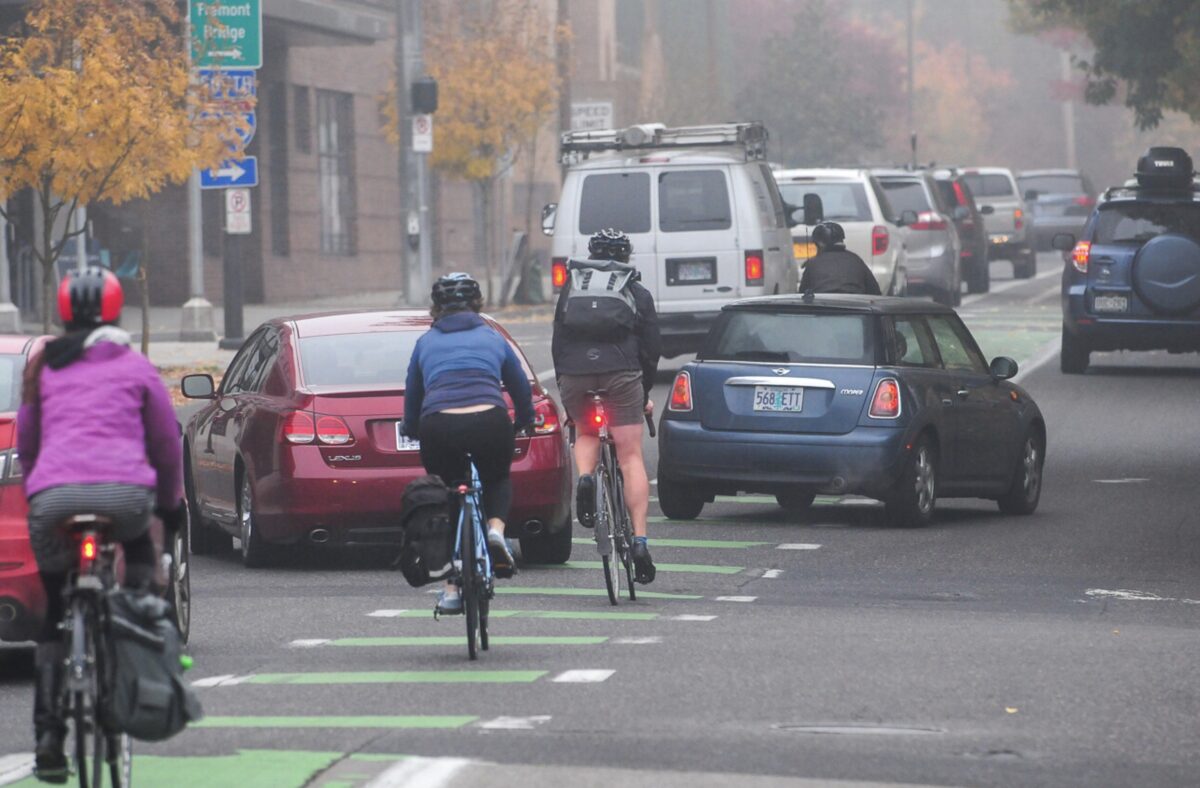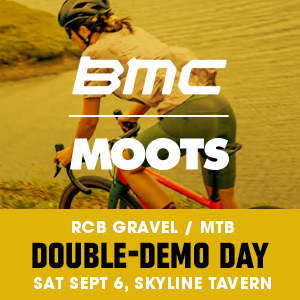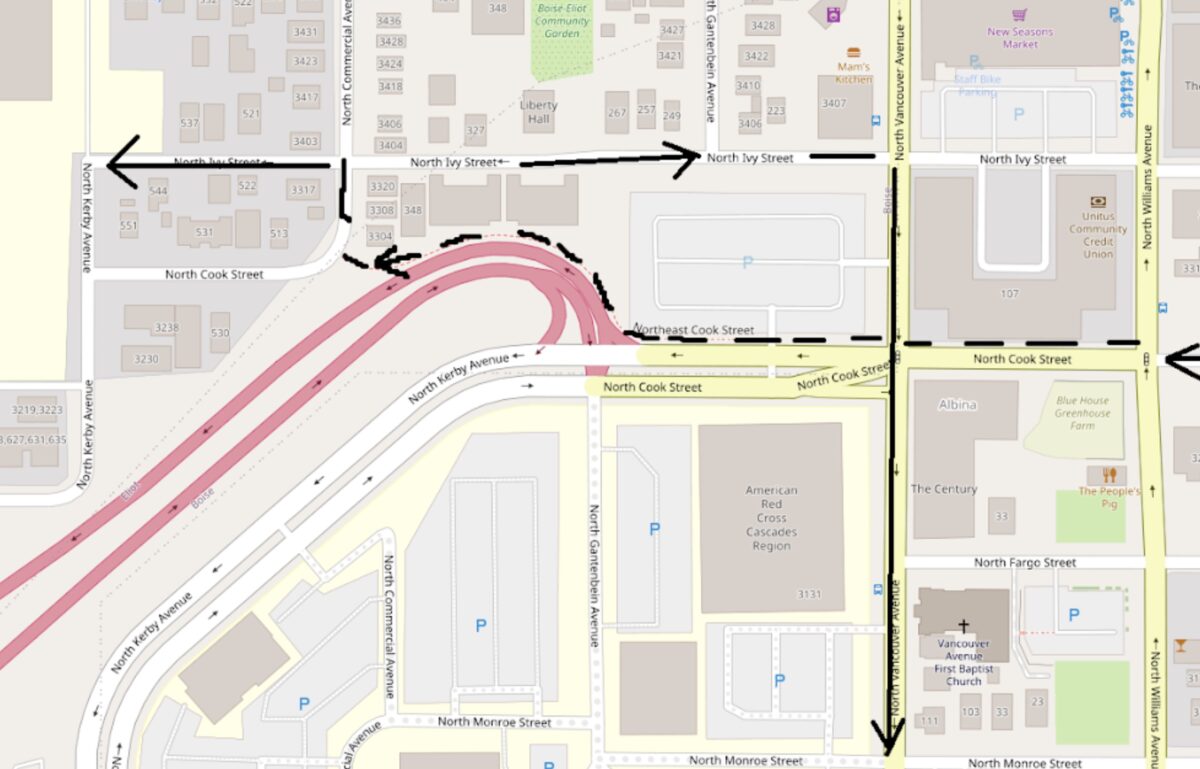By Allan Rudwick. This article first appeared in the Eliot Neighborhood Newsletter.
“I am convinced that the city should narrow North Vancouver by one lane through this stretch.”
– Allan Rudwick
The “Vancouver-Williams bicycle highway” was one of the first routes suggested to me to get around north and northeast Portland back in 2007 when I was first beginning my utilitarian cycling career. As a long, straight route between downtown Portland and Vancouver with relatively gradual hills, the Vancouver-Williams couplet is an obvious choice for a designated bikeway.
In the early 2010s, I was a member of the North Williams Safety Project Stakeholder Advisory Group, and I spent a lot of time thinking about how to tame a road where people lived, worked and played alongside drivers who regularly topped 40 miles per hour. From my observations, the biggest benefit of that project was not moving bicycles to the left side of the road or adding the concrete islands, it was reducing the car capacity to such a trickle as to force speeding drivers to slow down or consider alternate routes.
Fast forward to the 2020s, and my daughters have started attending our local neighborhood elementary school, Boise-Eliot/Humboldt School (BEH). This school name represents three schools being consolidated into one due to shrinking household sizes and intentional depopulation of the neighborhood by the Oregon Department of Transportation, Portland Development Commission, Emanuel Hospital and others. BEH is one of the better schools in the Portland Public Schools system at student retention. Our family has been very happy with the experienced teachers and administration at the school. The biggest challenge for us is commuting along and across the busy streets of our neighborhood, most of all N Vancouver Ave.
In 2010, I took a class at Portland State University called “Portland Traffic and Transportation.” Designed for citizen-advocates, the course guided each student to pick a road design problem in their neighborhood and empowered them to work with Portland Bureau of Transportation engineers to design a solution to their problem. I chose to look at the N Vancouver and Cook Street intersection because it was the most dangerous I’d seen. I personally witnessed the aftermath of multiple crashes at the intersection of Vancouver and Cook including one bicyclist/car collision.
The PBOT engineer who I ended up working with was not too surprised to hear about the collisions, as he happened to be doing an analysis of the worst intersections in the city. He was surprised that the city hadn’t noticed this problem area previously. I no longer share his sense of surprise, however, because I now know that our neighborhood had been overlooked by the city for many years up until the most recent wave of gentrification. I proposed adding traffic signals at the intersections on Cook Street with N Gantenbein Avenue, N Vancouver Avenue, and N Williams Avenue. Ultimately the city decided to add traffic signals at N Vancouver and N Williams Avenues, and this resolved a number of issues at the intersections.
To cycle from my house east of NE Rodney Avenue to BEH with my girls, there is only one comfortable route to the school. We bike to NE Cook Street, cross at the lights and ride the sidewalk around the ODOT onramps to get to N Gantenbein Avenue, and then we ride down the N Ivy Street alley to the school. Other than dodging shopping carts on ODOT’s poorly maintained sidewalk, it is a relatively peaceful trip from a car interaction perspective. On the way home, riding on this sidewalk puts us on the “wrong” side of the street, so I have opted to bike south on N Vancouver, which I find incredibly frustrating. My girls have learned how to maneuver through this configuration and follow me closely.
However, three narrow lanes of car travel with a narrow bicycle lane in the middle is uncomfortable for everyone, including drivers. I am convinced that the city should narrow N Vancouver by one lane through this stretch. Hardly anyone is using the southbound travel lane next to New Seasons to turn left on Cook street anyhow, so I think there is an easy win here. With that change, all the lanes could be expanded a bit to give everyone a little more breathing room while traveling. It would also reduce the number of lanes pedestrians and cyclists have to cross to reach the other side of the street.
Vancouver Ave is a preeminent route in what the League of American Bicyclists calls a “Platinum Bicycle Friendly Community,” and it’s unacceptable these blocks are designed for car throughput above all else. We deserve better.




